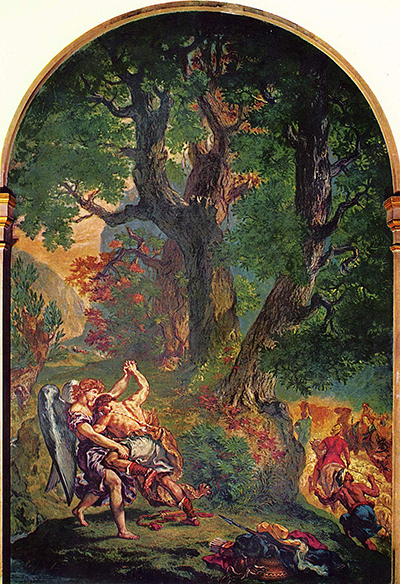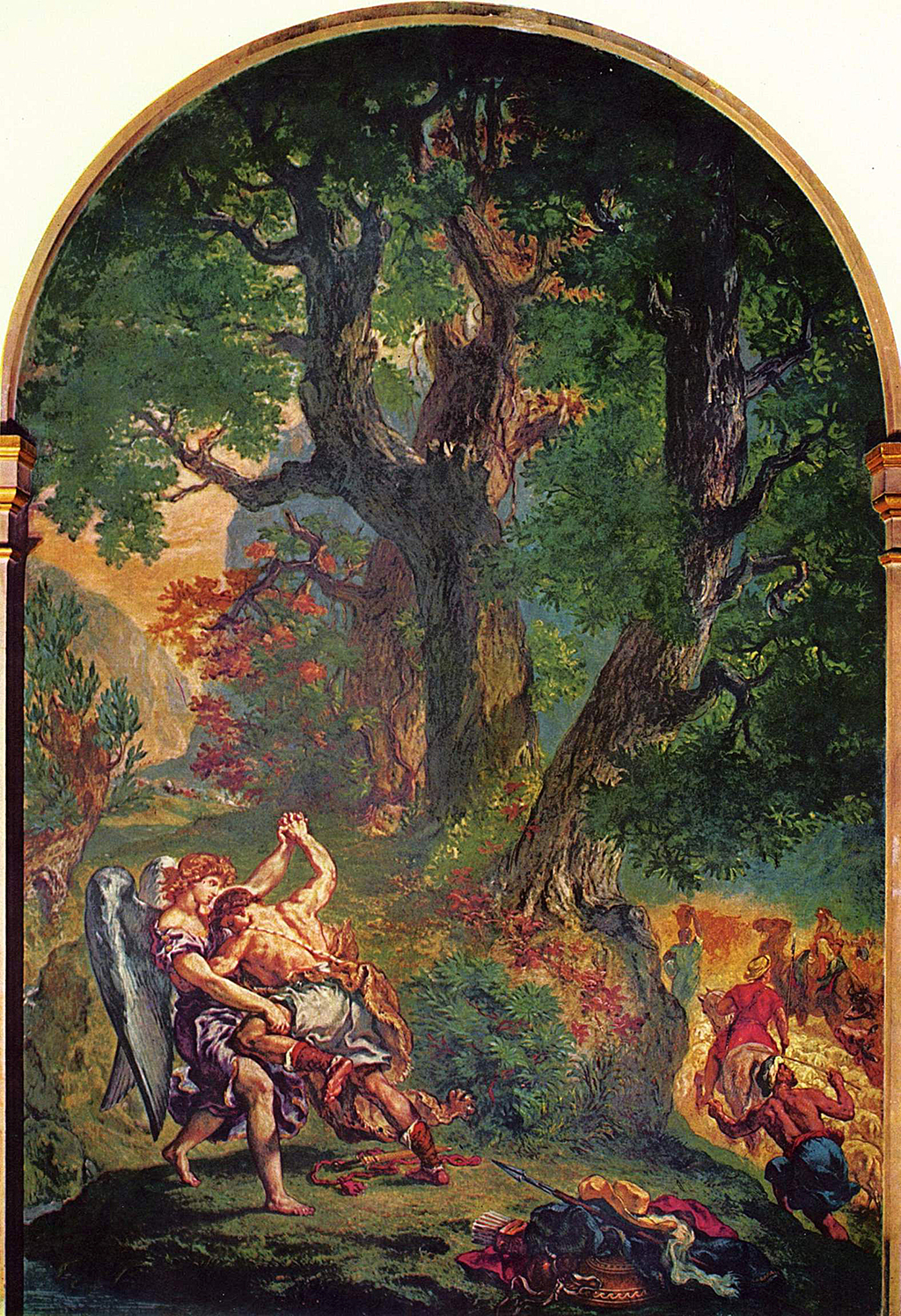Jacob Wrestling with the Angel was completed by Eugene Delacroix in around 1856-1861. The bright tones of red found in this curved canvas are typical of the artist.
When we first view this artwork in person we discover two figures wrestling in the bottom left hand corner of the scene. This immediately strikes us as the intended focal point of the composition. The pale tones of skin with red shadows is dominant above all else, and the wings of the figure on the left also catch our eyes. Behind them is a landscape scene of several overhanging trees, one of which at the back sports some beautiful leaves in the very same tone of bright red. Behind that is the suggestion of perhaps a valley, will hills across the way. The light is carefully controlled by the artist to arrive from the right hand side, mainly across the upper bodies of the two figures, brightening them as a result. To the bottom right are a number of other figures whose prominence does not seem as significant.
This painting was received to a great reception upon its unveiling. Delacroix had taken something from religious scripture and appended his own unique artistic style upon it. The content comes directly from Genesis XXXII, 24-32 and here we find Jacob, the muscular figure with his back to us, wrestling with an angel. Some have claimed that the clear differences in stature between these two figures is an inspiration from the work of Michelangelo. There are elements to this painting as well that remind us of the work of Impressionism as well as French artist Corot, which again can be somewhat of a matter of opinion. In all, this was an artist who made use of the techniques of many old masters within his work, but who also inspired countless numbers who followed on in the 19th century.
The artist actually described the composition in quite some detail himself which has helped us to answer some of the initial questions that academics would have had after it was first unveiled. That quote is left below. A number of study drawings have also been discovered that allow us to then learn more about the working practices of the artist. Classically-trained, there would be some stages that would be found in most artists' work of this period, but there was always room for variation based on personal taste and also differences in technique. The quote below also helps us to learn more about these earlier drawings as well. The Louvre holds a good number of drawings from his career, covering a wide variety of genres and feature an excellent coverage of the Romanticist and Neo-Classicist movements (David, Ingres) more generally.
"...Left-hand picture. Jacob Wrestling with the Angel. Jacob is bringing the flocks and other gifts by which he hopes to assuage the ire of his brother Esau. A stranger appears who stops him and engages him in a stubborn struggle, which ends only when Jacob, wounded in the tendon of the thigh by his opponent, is made powerless. This struggle is regarded, by Holy Scripture, as a sign of the ordeals that God sometimes visits upon his chosen ones..."





